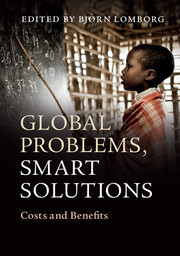Conclusion: Making Your Own Prioritization
Published online by Cambridge University Press: 05 June 2014
Summary
This book represents the conclusion of several years of work since the Copenhagen Consensus Center started to approach the experts and authors whose work forms this book, and asked them to identify the best ways to solve the world's biggest problems.
Part I of this book brought together analyses of twelve global challenges, and proposals for their solution or mitigation. The authors used economic CBA to provide a coherent framework for evaluation.
Over the past decade, the developed world has increased its annual assistance corrected for inflation by $49 billion. Each year, $130 billion is spent globally. Countless more billions are spent trying to make the world better – investments in vaccine research, peacekeeping forces, and carbon taxes.
Much is spent, yet these funds are limited. We have to make choices. Not explicitly prioritizing means we still make choices but we just don’t talk as clearly about them. My belief is that putting prices on the world’s solutions makes our decisions better informed. They are still difficult, but it gives us a sounder basis to get them right. In particular, it provides a common framework of reference for comparing investment programs which might otherwise seem so far apart that comparison was not possible.
- Type
- Chapter
- Information
- Global Problems, Smart SolutionsCosts and Benefits, pp. 717 - 718Publisher: Cambridge University PressPrint publication year: 2013



